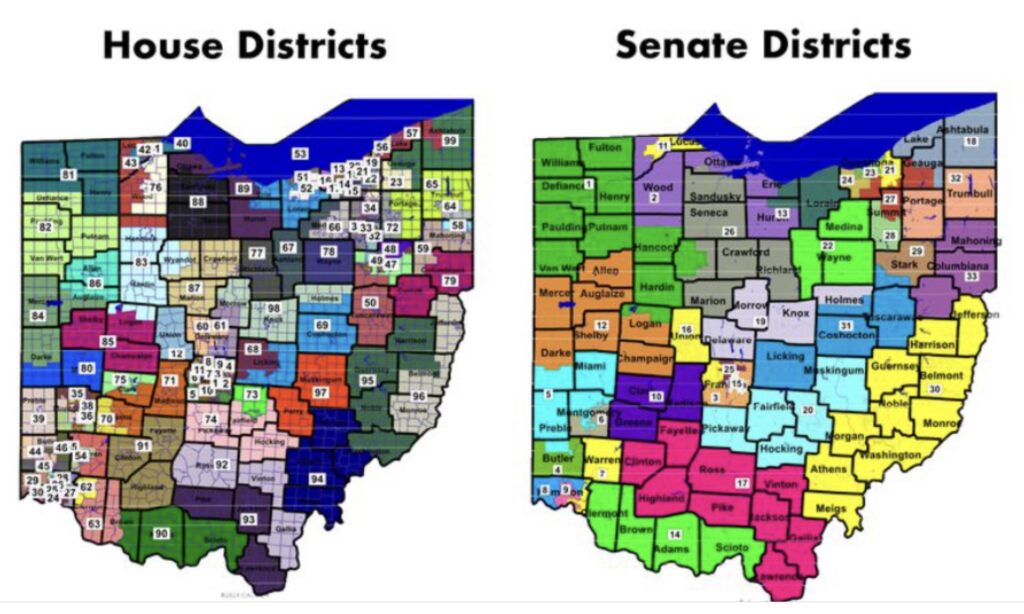Ohio’s Redistricting Saga Continues

Redistricting maps.

Ohio’s Redistricting Saga Continues
By Mary Schuermann Kuhlman
There’s another chapter in Ohio’s redistricting saga. Several groups filed legal challenges asking the Ohio Supreme Court to declare revised state legislative district maps invalid, arguing they violate the Ohio Constitution’s partisan fairness mandates.
After the state’s first maps were declared unconstitutional, the Ohio Redistricting Commission went back to the drawing board and approved new maps Saturday.
Maki Somosot, communications and narrative director for the Ohio Organizing Collaborative, said the map drawers identified districts in the original maps leaning slightly Republican, and revised the lines just enough to create razor-thin Democratic-leaning districts.
“This is just another example of our legislators putting their own party over people’s interests,” Somosot asserted. “At the end of the day, if we’re going to build a democracy that works for all of us, that means that we need to pick our leaders and not the other way around.”
Gov. Mike DeWine, who sits on the Ohio Redistricting Commission, indicated the revised map is as close to proportional as possible, and argued it conformed to all other provisions required by the constitution. The commission has until noon on Friday to respond to the objections.
Ohio’s voting breakdown is 54% Republican to 46% Democrat.
Collin Marozzi, deputy policy director for the ACLU of Ohio, explains the revised maps give Republicans a 57-42 advantage in the House and a 20-13 advantage in the Senate.
“There really is a tilt, a very intentional skew, to put the Democratic seats in a much more precarious position rather than the Republican districts which have been drawn to ensure a level of safety for those members,” Marozzi contended.
Meanwhile, the Ohio General Assembly is tasked with redrawing congressional districts after the state Supreme Court found the map violated partisan gerrymandering rules. Marozzi noted redistricting is now a hot-button issue among voters.
“The maps that are ultimately adopted from one state to another in the aggregate has the ability to change the party in power in the U.S. House of Representatives,” Marozzi pointed out. “And people have rightly begun to view redistricting as a linchpin for democracy.”
Alabama, Alaska, Florida, Michigan and Texas are among the states where there are also legal challenges over newly drawn districts.






